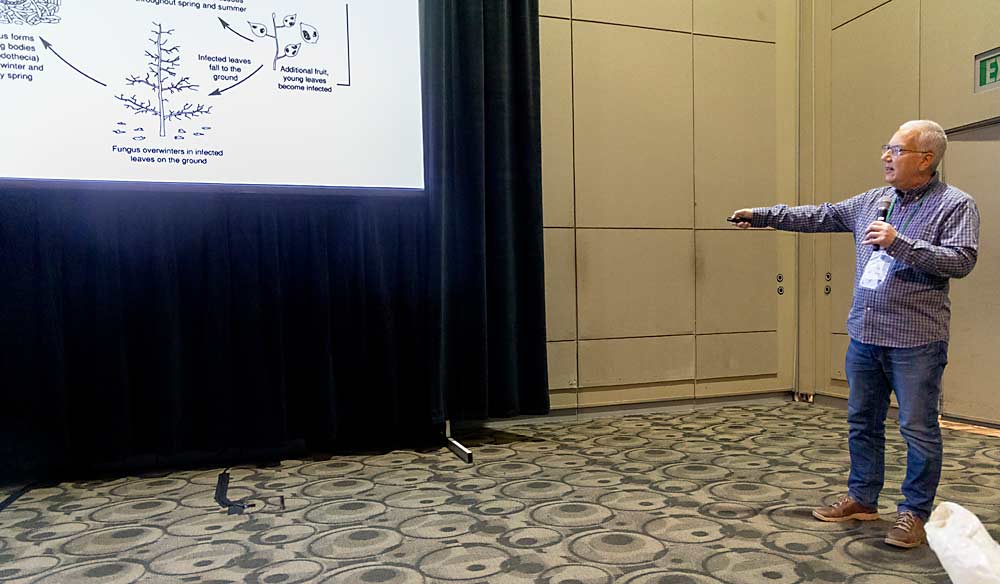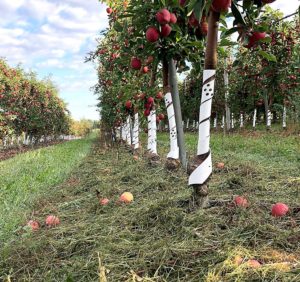
Erratic weather leads to unpredictable disease patterns in fruit, which can scramble management plans and leave growers scratching their heads.
But weird weather patterns just might be the new reality, requiring extra vigilance for disease control.
“Weather that favors one pathogen can inhibit another, but there are enough pathogens of apple to fill the various weather niches,” said Michigan State University professor and tree fruit pathologist George Sundin.
Sundin discussed changing weather and disease patterns during the Great Lakes Fruit, Vegetable, and Farm Market EXPO in December. He focused on the Michigan apple industry. Most years in Michigan, there are prolonged wetting events during primary apple scab season, but in 2023 it was unusually dry.
“When it’s dry, we’re celebrating not dealing with scab pressure, but mildew pressure can come with that,” he said. “We always have to be on top of things with disease management.”
Even in a dry year, apple scab inoculum can overwinter in fallen leaves. When temperatures start rising the following spring, the fungus grows quickly. If it rains, apple scab spores will be released into the air and infect any green tissue or fruit they land on. Most spore-release occurs between pink and petal fall, and once infection hits, it can spread quickly. That’s why management is critical during the early infection period, he said.
Scab pressure abates during dry conditions, but that’s not the case with powdery mildew.
“When we’re thinking: ‘We’re not spraying for scab, so we’re good,’ we have to remember that there are other diseases that can still strike us when it’s dry,” Sundin said.
The powdery mildew fungus overwinters in buds and starts to infect them during bud break. Winter temperatures below minus 10 degrees Fahrenheit kill mildew-infected buds, but “these days we don’t get a lot of those cold nights in winter,” he said. The warmer it gets, the more the fungus grows and the farther it can spread. If you have a big mildew outbreak in one season, you must start control early the following season to avoid the same fate. It’s a tough cycle to break.
Sundin said the demethylation inhibitor fungicide Rhyme (flutriafol) is best for mildew control, but it doesn’t touch apple scab because of fungicide resistance. So, growers must remember that when they are spraying for mildew, they’re adding a fungicide to the tank that typically will not provide scab control.
“It’s a tried-and-true thing with fungicides: The better it is for mildew, the worse it is for scab — and vice versa,” he said.
—by Matt Milkovich







Leave A Comment